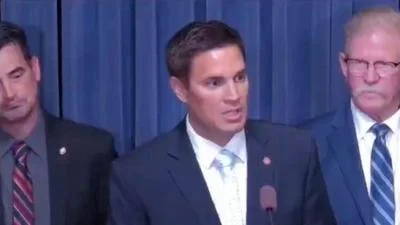David Harris Director the Illinois Department of Revenue | Official Website
David Harris Director the Illinois Department of Revenue | Official Website
Gallatin County has been issued a tentative property assessment equalization factor of 1.0000, as announced by David Harris, the director of the Illinois Department of Revenue (IDOR). Known as the multiplier, this factor is used to ensure consistent property assessments across counties in line with legal requirements.
The need for such equalization arises because some of Illinois' 6,600 local taxing districts, including school and fire protection districts, span multiple counties. Without this equalization, significant disparities could occur among taxpayers who own comparable properties.
In Illinois, state law mandates that properties are assessed at one-third of their market value. However, farm properties are valued differently, with adjustments made for farmland and buildings based on productivity. The equalization factor is established annually by comparing the sales price of properties over the last three years with their assessed values from the county assessor.
When the three-year average assessment aligns at one-third of the market value, the equalization factor is 1.0000. If the average assessment exceeds this value, the factor falls below one; if it's below, the factor rises above one.
Currently, assessments in Gallatin County are at 33.26% of market value, based on property sales from 2021 to 2023. This equalization factor is applicable for taxes in 2024, payable in 2025. The county's previous year's factor was also 1.0000.
The tentative factor can be altered if the County Board of Review takes significant actions affecting assessments or if new data is presented to IDOR justifying an adjustment of the average assessment level. A public hearing on the tentative multiplier will occur between 20 and 30 days after its publication in a local newspaper.
It is important to note that changes in the equalization factor do not directly impact total property tax bills. These are determined by local taxing entities when they set their annual budgetary needs. Unless local taxing districts request more funds than the previous year, overall property taxes will remain unchanged despite potential assessment increases.
The assessed value of a property dictates a taxpayer's share of the tax burden. This individual's tax responsibility remains constant regardless of the multiplier changes.






 Alerts Sign-up
Alerts Sign-up